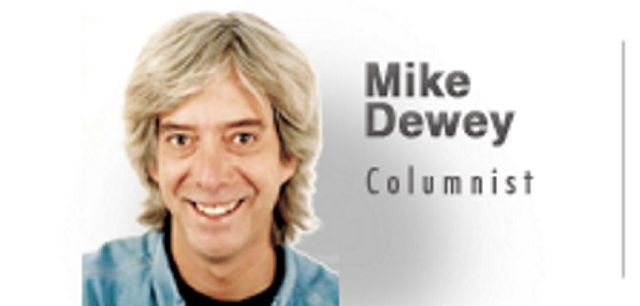The power of the fountain pen
- Michelle Wood: SWCD
- February 27, 2017
- 556
So I was sitting on the patio the other day Presidents Day, in fact getting ready to take my trusty axe to a large and unkempt pile of limbs and branches that had accumulated over the winter, when I suddenly remembered something I hadnt thought of in years.
It was the winter of 1966, and I, a fifth-grader, was dressed as Abraham Lincoln.
This wasnt anything that any other student in school had to deal with; no, this was a direct and unfortunate offshoot of having been able to memorize Casey at the Bat the year before.
That was the prelude to this assignment: memorizing the Gettysburg Address and reciting it, in costume, in front of every class in the school.
I suppose they thought that because Id mastered the Mass in Latin an altar boys responsibility as a fourth-grade student that this would be easy. But it wasnt.
Have you ever actually read the thing? Lots of strange verbiage and off-kilter syntax.
Still I took pride in being able to get through the ordeal with no real loss of life on either side of the great divide.
Nothing really prepares a kid for something like that, but I have to admit I enjoyed the brief notoriety that accompanied the whole ordeal, and it was an added plus to get my picture taken and published in my hometown newspaper.
Honestly I didnt mind special school projects, stuff done outside the mainstream of everyday homework. The eighth-grade science fair brought out the best in me for reasons that remain elusive to this night.
Perhaps it was because so little was expected of me, being a young man more comfortable with books and ideas than physics and theoretical leaps of faith.
Ah yes, faith: the ability to believe in something that cant be proven. This was the root, probably, of my dedication to the subject of optical illusions.
The public library had a book or two on the subject providing an illustration or two or three and the Readers Guide to Periodical Literature gave me a sound foundation into the mysteries of why the eyes lie to the brain.
One of them was so simple, but it fooled nearly everyone. Lets try it once more. What does this say?
PARIS IN THE
THE SPRING
See what I mean? You probably missed the second the. Its OK. Its just that you had lyin eyes.
Dont blink. You could miss all the fun.
My fourth-grade teacher, a no-nonsense nun, provided my indoctrination into the specifics and vagaries of how to create the perfect special project assignment.
She stressed a synthesis of the written and the visual. Shed have made a terrific web page designer. She wanted excellence and toward that end instructed us to have our parents invest in real fountain pens, the kind that had to be loaded with spiritual ink cartridges and used a special sharp nib.
These were authentic writing implements and always put me in mind of the signers of the Declaration of Independence whenever I used one.
Beyond that the designing nun would pass around special paper for important assignments, and that was kind of intimidating. I mean rose and goldenrod and evergreen were shades found in nature, and she was encouraging us to think organically, subliminally reordering our formative consciousnesses.
Three of those essays have survived, thanks to my father, and I like them as a set: JFK, LBJ and Churchill, lions of liberal thinking.
The mid-60s in a small, conservative town like mine wouldnt (youd think) be an incubator for that kind of heroic introspection, but then again my choices werent probably in step with those my classmates offered.
This was a direct result of our parents and their ideologies. I remember kitchen table debates, the way that (even as small children) we were encouraged to think big and dream bigger.
Loading those blue ink cartridges into the stem of a Schaeffer fountain pen was like sliding a 10-megaton bomb into the belly of a B-52.
Look out below.
One more project should be mentioned. My ninth-grade biology teacher set the class loose on the landscape, seeking to collect and collate all the wildflowers we could lay our hands on in the spring of 1970.
I wandered everywhere, and armed with my Roger Peterson Field Guide, I plucked, transported and pressed my specimens.
Mounted in a ringed binder, they numbered nearly 200 and earned me a fine grade. But that wasnt the point. It was all about getting acclimated to the great outdoors in search of, in my case, something that couldnt be found: the elusive red trillium.
But its nearly spring once again, and who knows? This might be the year I finally find one.
Mike Dewey can be emailed at CarolinamikeD@aol.com or snail-mailed at 6211 Cardinal Drive, New Bern, NC 28560.

